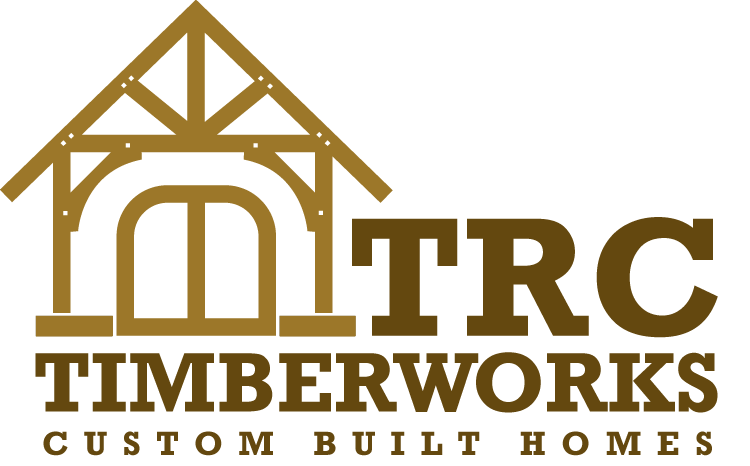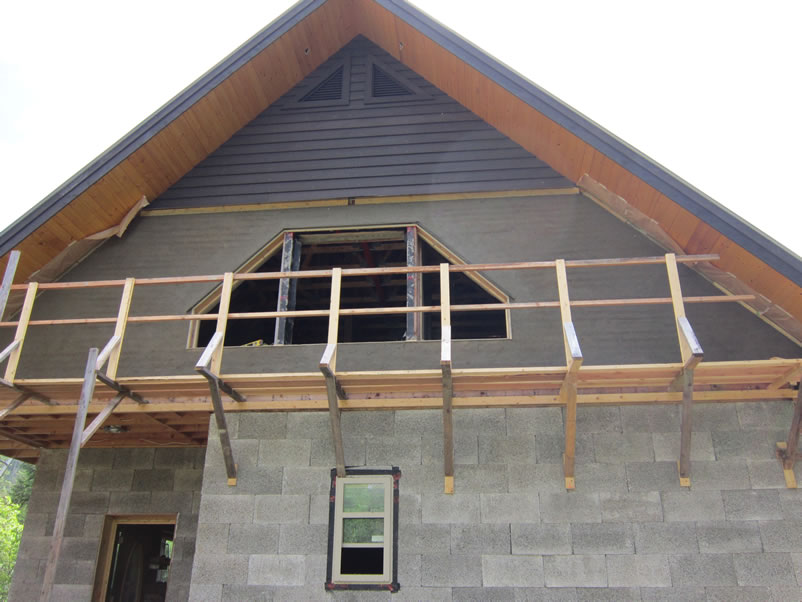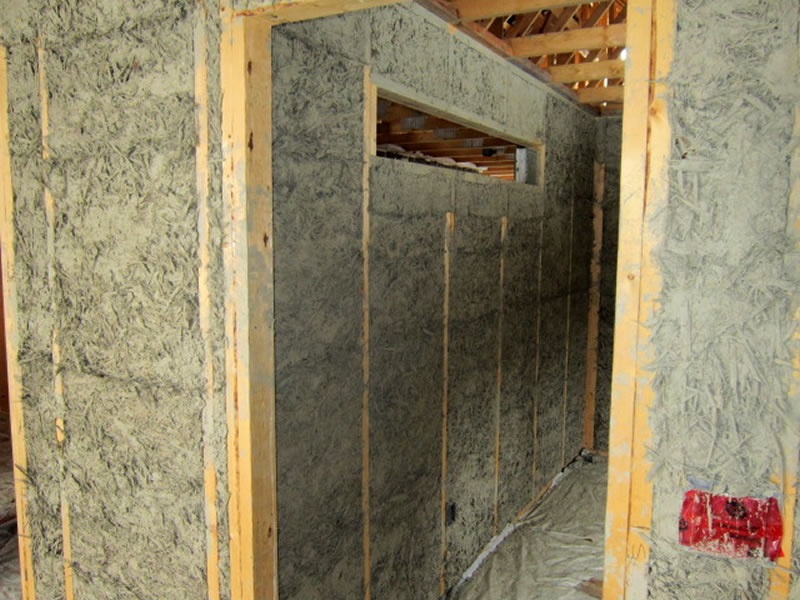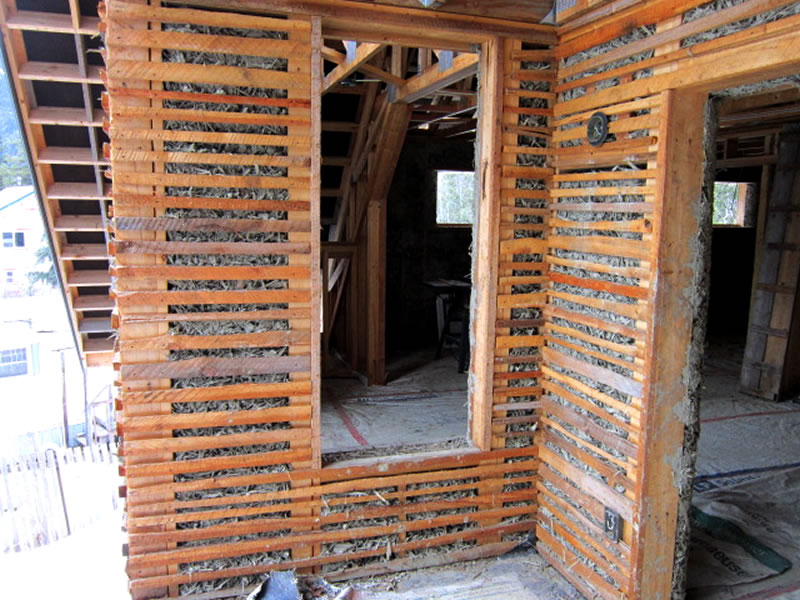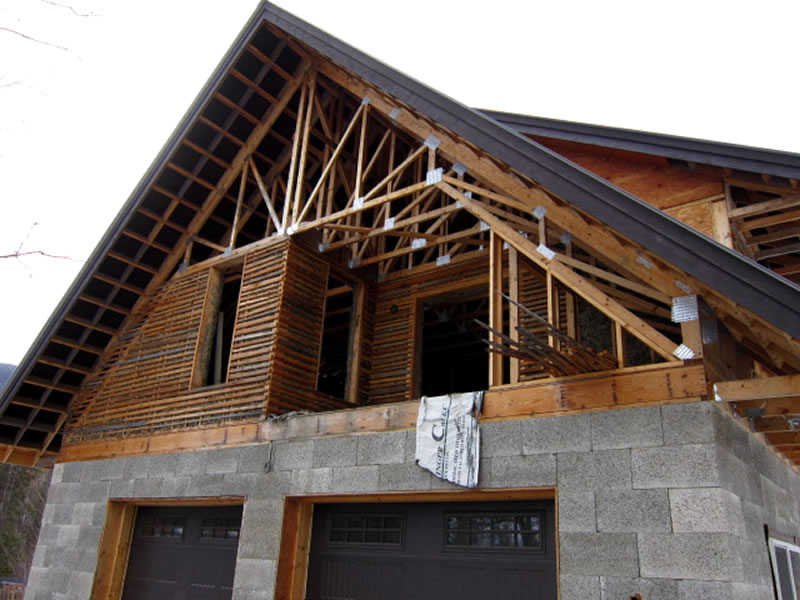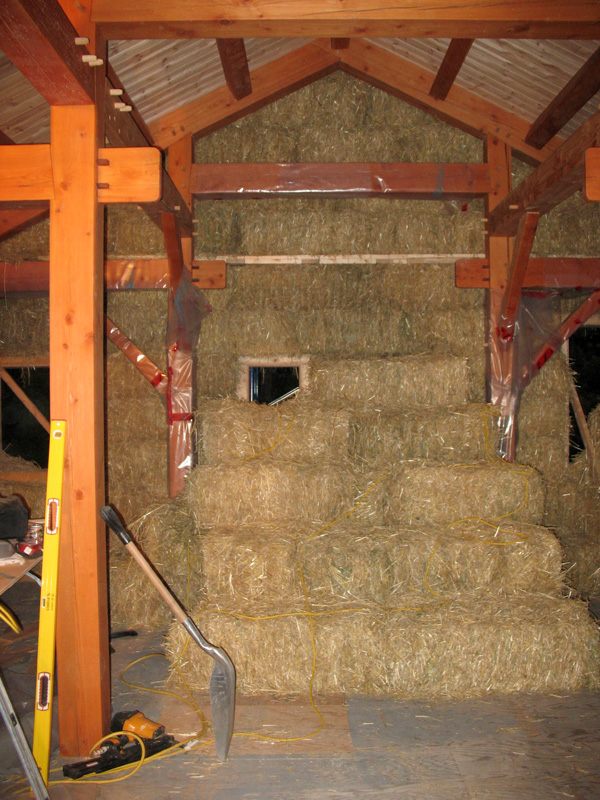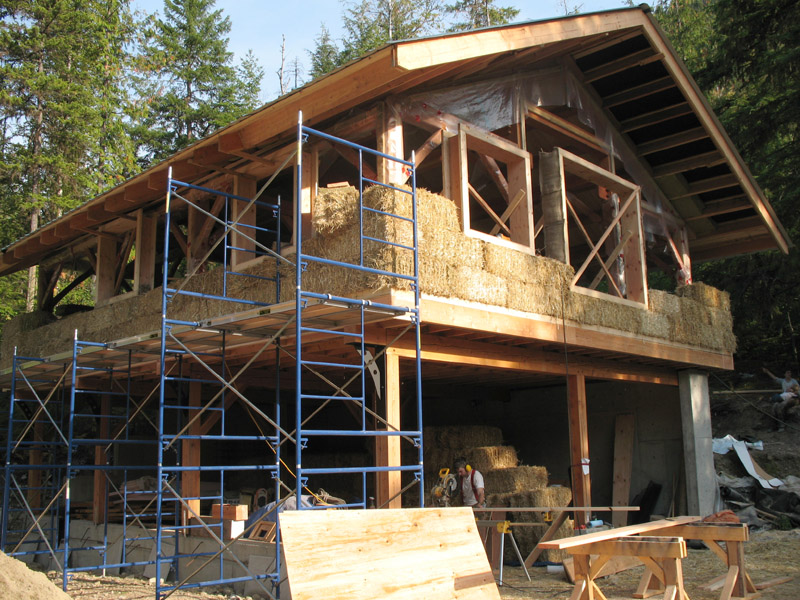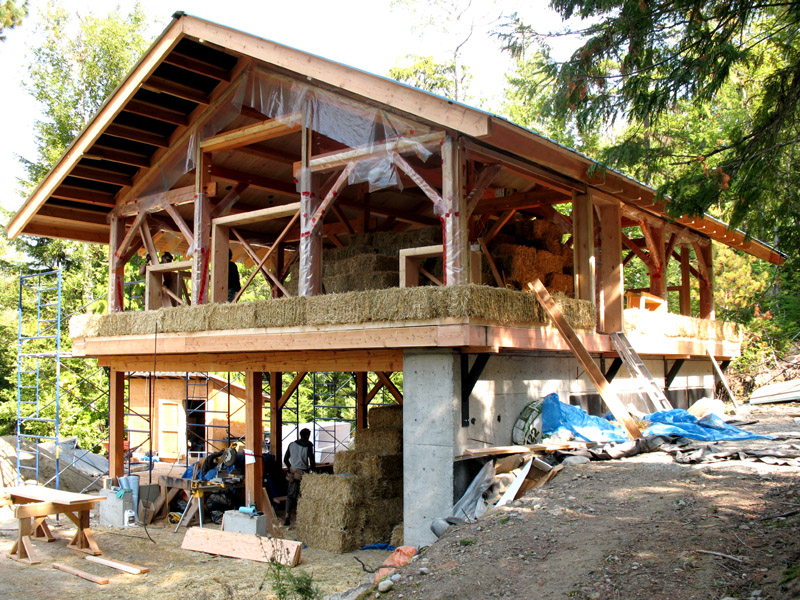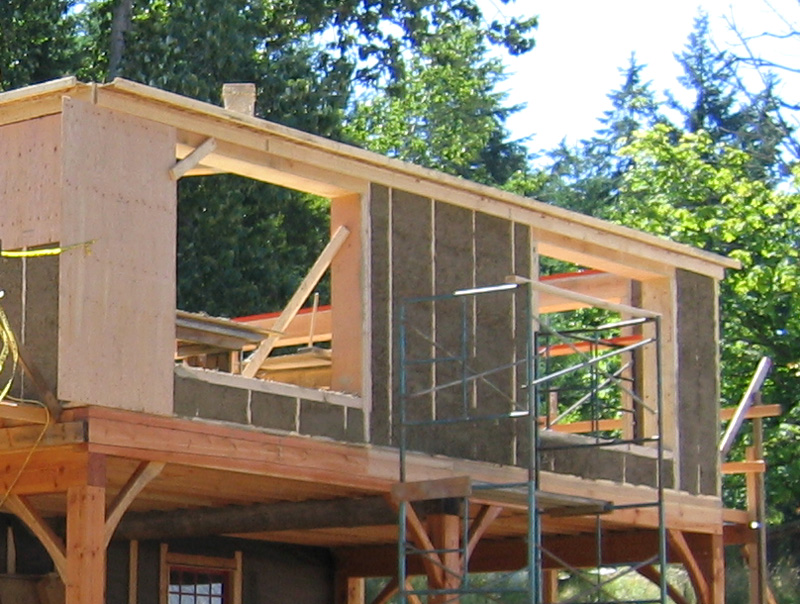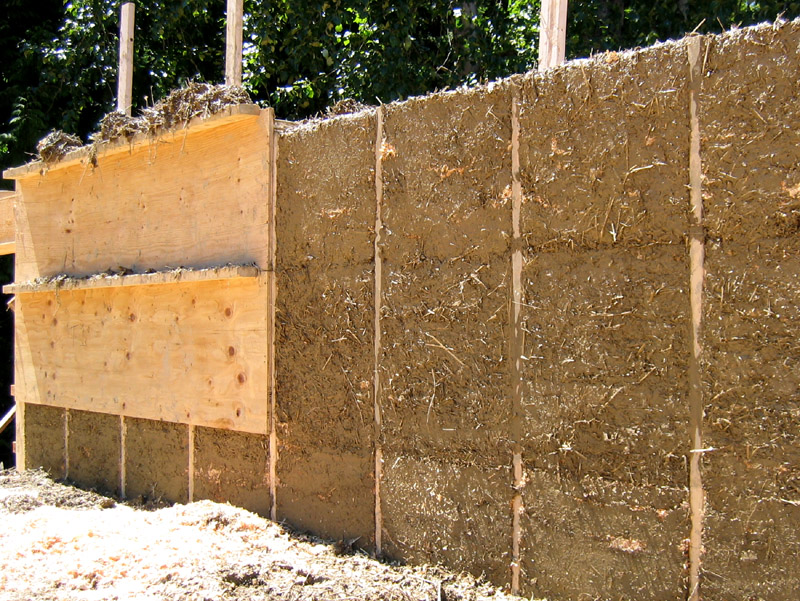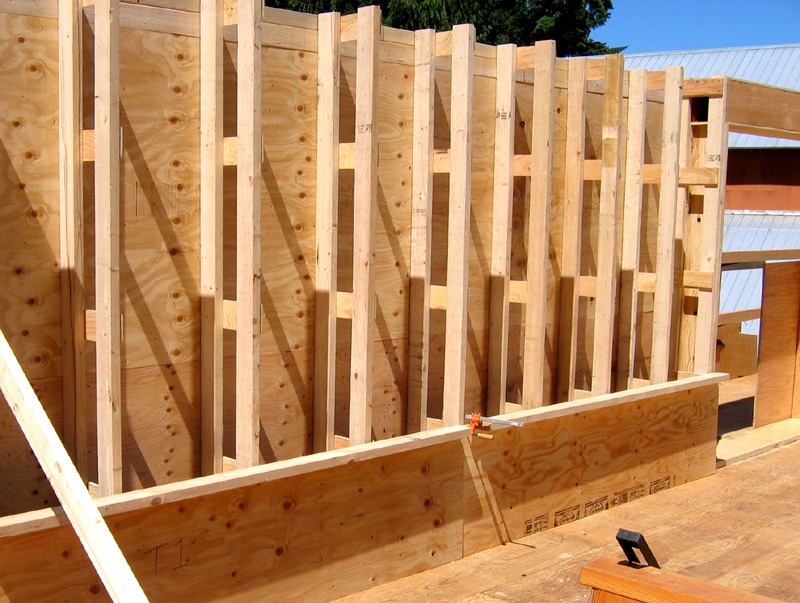An exterior photo of the body coat of earthen plaster on the woodchip/clay walls, showing the smooth shaping of this coat of plaster on the second storey of the building. The final coat of plaster will be a finish colour coat.
The first storey was built with Durisol blocks. Durisol blocks are a brand of ICF (insulated concrete forms). They are cement bonded wood fibre blocks (similar in shape to cinder blocks), made of ground up post-consumer wood waste, portland cement and a non-compressible rot-proof insulation material such as mineral wool. The blocks are stacked, keeping the insulation part of the blocks to the exterior, and the hollow space that is biased to the interior of the building is filled with concrete to create a stable wall.
